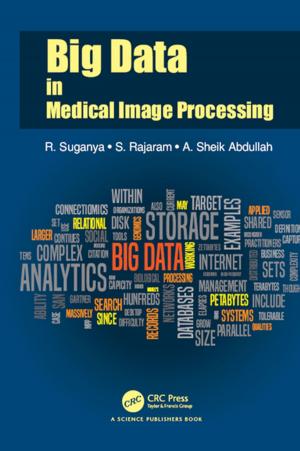| Author: | Kenneth W. Kisiel | ISBN: | 9781134783328 |
| Publisher: | CRC Press | Publication: | April 17, 2018 |
| Imprint: | CRC Press | Language: | English |
| Author: | Kenneth W. Kisiel |
| ISBN: | 9781134783328 |
| Publisher: | CRC Press |
| Publication: | April 17, 2018 |
| Imprint: | CRC Press |
| Language: | English |
Virtual environments (VE) are human-computer interfaces in which the computer creates a sensory-immersing environment that interactively responds to and is controlled by the behaviour of the user. Since these technologies will continue to become more reliable, more resolute and more affordable, it's important to consider the advantages that VEs may offer to support business processes. The term 'synthetic world' refers to a subset of VEs, having a large virtual landscape and a set of rules that govern the interactions among participants. Currently, the primary motivators for participation in these synthetic worlds appear to be fun and novelty. As the novelty wears off, synthetic worlds will need to demonstrate a favourable value proposition if they are to survive. In particular, non-game-oriented worlds will need to facilitate business processes to a degree that exceeds their substantial costs for development and maintenance. Working Through Synthetic Worlds explores a variety of different tasks that might benefit by being performed within a synthetic world. The editors use a distinctive format for the book, consisting of a set of chapters composed of three parts: ¢ a story or vignette that describes work conducted within a synthetic world based loosely on the question, 'what will work be like in the year 2025?', founded on the expert authors' expectations of plausible future technologies ¢ a scholarly review of the technologies described by the stories and the current theories related to those technologies ¢ a prescription for future research required to bridge the current state-of-the-art with the notional worlds described in the stories. The book will appeal to undergraduate and graduate students, professors, scientists and engineers, managers in high-tech industries and software developers.
Virtual environments (VE) are human-computer interfaces in which the computer creates a sensory-immersing environment that interactively responds to and is controlled by the behaviour of the user. Since these technologies will continue to become more reliable, more resolute and more affordable, it's important to consider the advantages that VEs may offer to support business processes. The term 'synthetic world' refers to a subset of VEs, having a large virtual landscape and a set of rules that govern the interactions among participants. Currently, the primary motivators for participation in these synthetic worlds appear to be fun and novelty. As the novelty wears off, synthetic worlds will need to demonstrate a favourable value proposition if they are to survive. In particular, non-game-oriented worlds will need to facilitate business processes to a degree that exceeds their substantial costs for development and maintenance. Working Through Synthetic Worlds explores a variety of different tasks that might benefit by being performed within a synthetic world. The editors use a distinctive format for the book, consisting of a set of chapters composed of three parts: ¢ a story or vignette that describes work conducted within a synthetic world based loosely on the question, 'what will work be like in the year 2025?', founded on the expert authors' expectations of plausible future technologies ¢ a scholarly review of the technologies described by the stories and the current theories related to those technologies ¢ a prescription for future research required to bridge the current state-of-the-art with the notional worlds described in the stories. The book will appeal to undergraduate and graduate students, professors, scientists and engineers, managers in high-tech industries and software developers.















